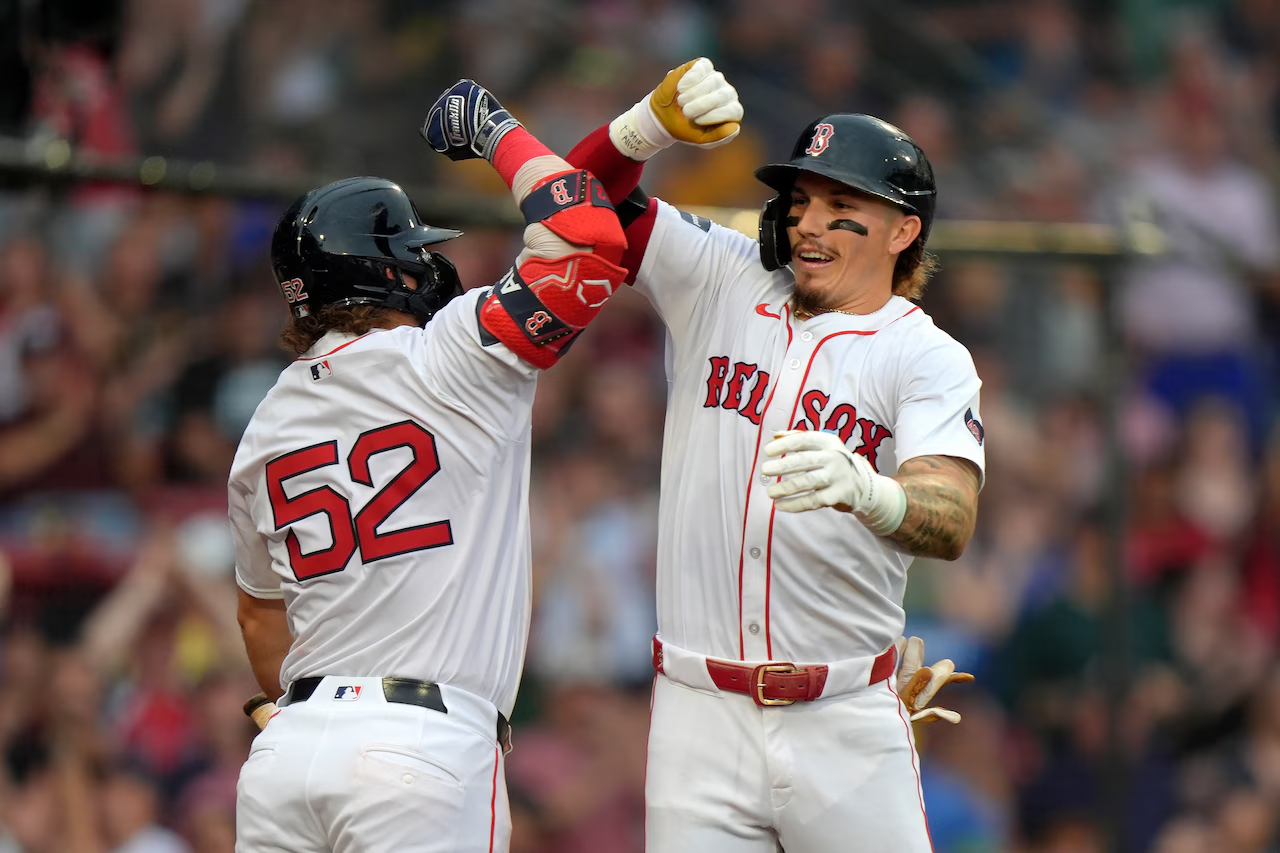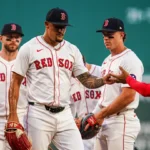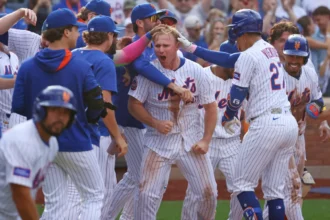The Major League Baseball offseason is often a slow and uneventful stretch, filled with speculation, minor transactions, and front-office maneuvering that can make even the most devoted fans impatient. Yet, not every day is a quiet one. For the Boston Red Sox, Tuesday proved to be anything but dull. The team executed a flurry of moves, making significant trades, adjusting its 40-man roster, and shaking up parts of the pitching and catching depth chart in a way that will have ripple effects through the organization in the months to come. For a franchise often scrutinized for its offseason activity, this was a day that demanded attention.
The most notable news came Thursday afternoon, when Hunter Noll of Beyond the Monster reported that the Red Sox had traded left-handed pitcher Brennan Bernardino to the Colorado Rockies. Bernardino, a player who quickly became a fan favorite during his tenure in Boston, was sent west in exchange for outfielder Braiden Ward, according to Chris Cotillo of MassLive. While on paper this is a fairly standard player-for-player swap, the move carried considerable weight for Red Sox fans, who had grown attached to Bernardino’s steady presence on the mound.
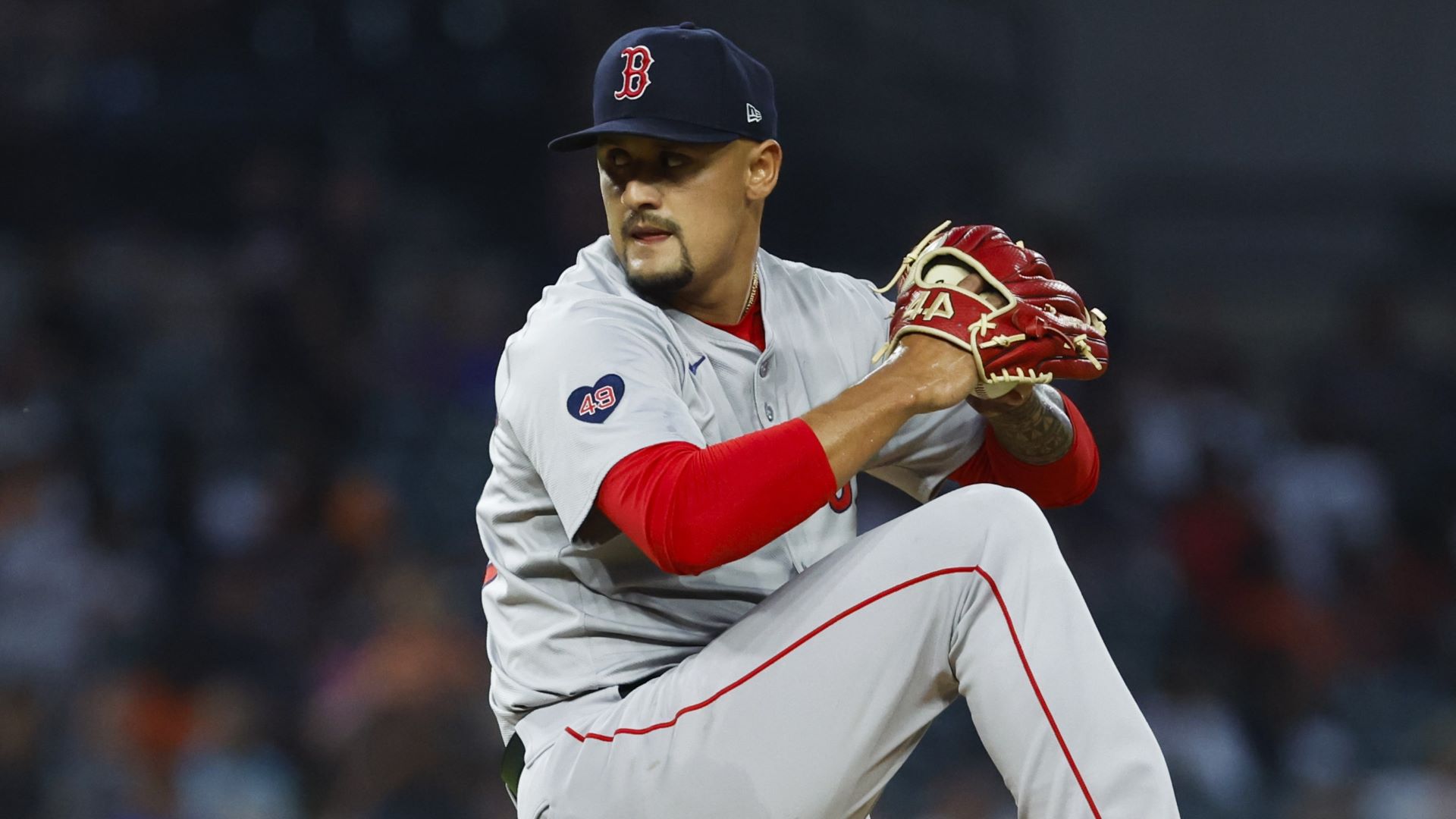
In total, the Red Sox executed four trades on Tuesday, demonstrating a clear willingness to adjust the roster while simultaneously protecting the organization’s future. Beyond simply trading players, the club promoted three minor-leaguers to the 40-man roster and parted ways with a former World Series champion. It was a whirlwind of activity that highlighted both strategic foresight and a touch of boldness. Understanding the full impact of these moves requires a closer look at each individual transaction and the broader context in which they occurred.
Starting with Bernardino, his departure was the third pitching move of the day for the Red Sox, but it was arguably the most emotionally significant. Over his three-year stint in Boston, Bernardino made 167 appearances, totaling 153 1/3 innings pitched with a respectable 3.46 ERA. He was versatile, handling everything from high-leverage situations and opener duties to mop-up assignments, and he consistently did so with professionalism. Fans appreciated his reliability, adaptability, and unassuming approach, which made him a rare constant in a bullpen that has seen considerable turnover in recent years. Trading him to Colorado was not just a baseball decision but also an emotional one for the fan base, marking the end of an era for a player who had become a recognizable face in Boston’s bullpen rotation.

Following Bernardino’s trade, the Red Sox weren’t done. Later in the day, Boston sent 26-year-old pitcher Alex Hoppe to the Seattle Mariners in exchange for 22-year-old catcher Luke Heyman, again reported by Cotillo. Neither Hoppe nor Heyman was on the 40-man roster, but Hoppe was eligible for the Rule 5 Draft, which meant that Boston had an incentive to gain value in return rather than risk losing him for nothing. Hoppe, who has yet to make his Major League debut, had spent time moving between Double-A and Triple-A levels in 2025. By trading him, the Red Sox were able to address a positional need at catcher while also making room to secure prospects from exposure to other teams.
The trading spree continued with left-handed pitcher Chris Murphy being sent to the Chicago White Sox for catcher Ronny Hernandez, as reported by both Cotillo and Bob Nightengale of USA Today. This move further emphasized Boston’s focus on bolstering its depth behind the plate while also moving pieces that were potentially expendable in the organization’s broader strategic plan. Earlier in the day, the Red Sox had traded right-handed pitcher Luis Guerrero to the Tampa Bay Rays in exchange for infielder Tristan Gray. Guerrero, a promising arm, had demonstrated flashes of potential but was ultimately moved as part of a series of calculated adjustments designed to realign the roster with the team’s long-term goals.
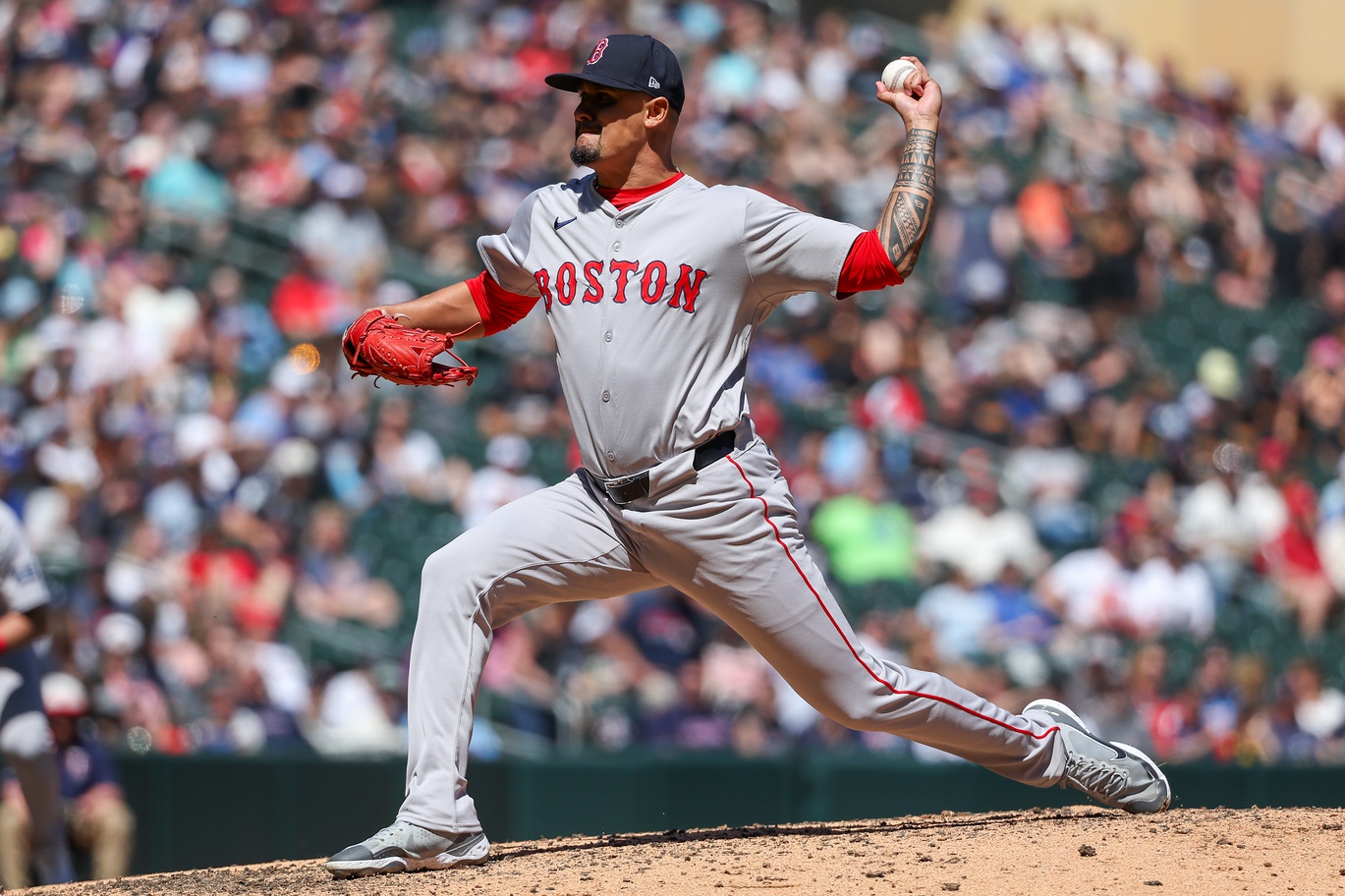
Roster management wasn’t limited to trades alone. To accommodate the influx of new players and protect certain prospects, Boston designated two players for assignment: first baseman Nathaniel Lowe and right-handed pitcher Josh Winckowski. Lowe had a brief stint in Boston and was on the path to being non-tendered, while Winckowski, who had spent considerable time in the bullpen in 2023, had fallen out of favor. These moves cleared space on the 40-man roster, a necessary step to ensure that the Red Sox could add the players they intended to protect from the Rule 5 Draft.
The urgency to clear roster space was tied directly to Tuesday’s deadline for the Rule 5 Draft, a mechanism that allows teams to select certain unprotected minor-league players from other organizations. By adding eligible prospects to the 40-man roster, teams prevent losing talent to rival organizations. Boston had three players it was keen to safeguard, all of whom were pitchers: right-handed David Sandlin, right-handed Triple-A workhorse Tyler Uberstine, and left-handed Shane Drohan. Drohan, despite spending significant time on the injured list in 2025, showcased his potential when healthy, demonstrating that he could be a valuable asset in either a starting or relief role.
The decisions to trade Bernardino and Murphy reflected confidence in the Red Sox’s pitching depth, particularly in the form of Drohan. In 2025, Drohan struck out 77 batters across 54 innings, showing both strikeout ability and durability. The organization now faces a decision regarding his role—either continue him as a starter or move him into the bullpen, depending on the composition of the pitching staff and the potential acquisition of additional arms via free agency or trades. Meanwhile, younger players like Payton Tolle may fill gaps if no other moves are made, emphasizing the Red Sox’s approach of balancing proven talent with developing arms.
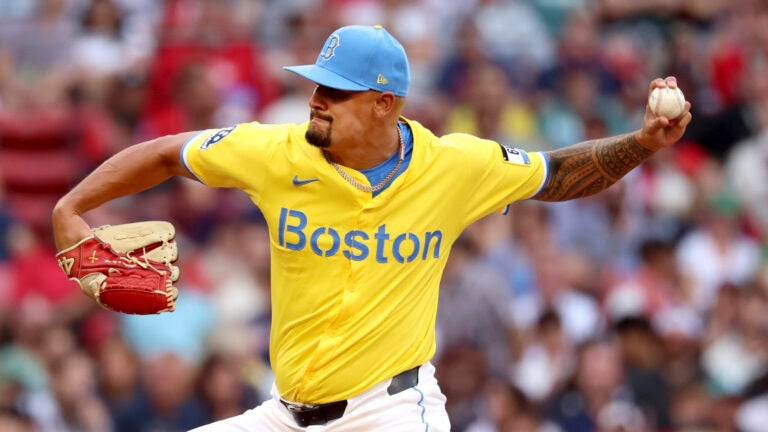
The trade of Bernardino, in particular, is illustrative of Boston’s willingness to leverage established assets to secure younger, potentially high-upside players. Braiden Ward, the outfielder acquired from Colorado, represents one such investment. Ward, still in the early stages of his career, offers a combination of athleticism, speed, and defensive versatility. While he is not yet a finished product, the Red Sox hope that he can develop into a key contributor in the outfield over the coming seasons. Similarly, Ronny Hernandez, acquired in the Murphy trade, provides organizational depth at catcher, a position where Boston has historically sought consistency and production behind the plate.
Meanwhile, the departure of veterans like Guerrero and Winckowski signals a broader philosophy: the Red Sox are not afraid to part ways with players who may have value in the short term if it means securing the organization’s long-term trajectory. By focusing on younger talent and controlling roster spots on the 40-man, Boston ensures that it has the flexibility to make further acquisitions, protect key prospects, and maintain payroll efficiency as the offseason progresses.

These moves also carry subtle messaging to the rest of the league. By trading established arms and acquiring younger, high-upside players, the Red Sox demonstrate that they are a team thinking beyond the immediate season, valuing depth and projection over short-term fills. The organization clearly trusts its scouting, player development, and analytics departments to identify talent that can thrive in Boston’s system while simultaneously protecting its best prospects from being poached in the Rule 5 Draft.
Adding to the complexity, the Rule 5 Draft protection moves required careful balancing. Sandlin, Uberstine, and Drohan were all considered crucial enough to secure on the 40-man roster, meaning that other players had to be moved off to make room. This is not an unusual scenario in baseball front offices, but it highlights the constant juggling act teams face: weighing current roster needs against potential future returns. Protecting prospects is always a gamble, as development is never guaranteed, but failing to act can result in losing promising talent to rival organizations for minimal compensation.
In evaluating the broader impact of these trades, it’s important to note the Red Sox’s approach in terms of player profiles. Bernardino and Murphy, while effective, were both pitchers who occupied roles that could be filled internally or by emerging talent. Guerrero had potential upside but was expendable in the team’s long-term plans. In exchange, Boston acquired Ward and Hernandez, who both offer positional flexibility and long-term projection, as well as Tristan Gray, who brings left-handed hitting to an infield mix that can benefit from additional offensive balance. Luke Heyman, though untested at the Major League level, represents a potential catcher of the future, giving Boston options both immediately and down the line.
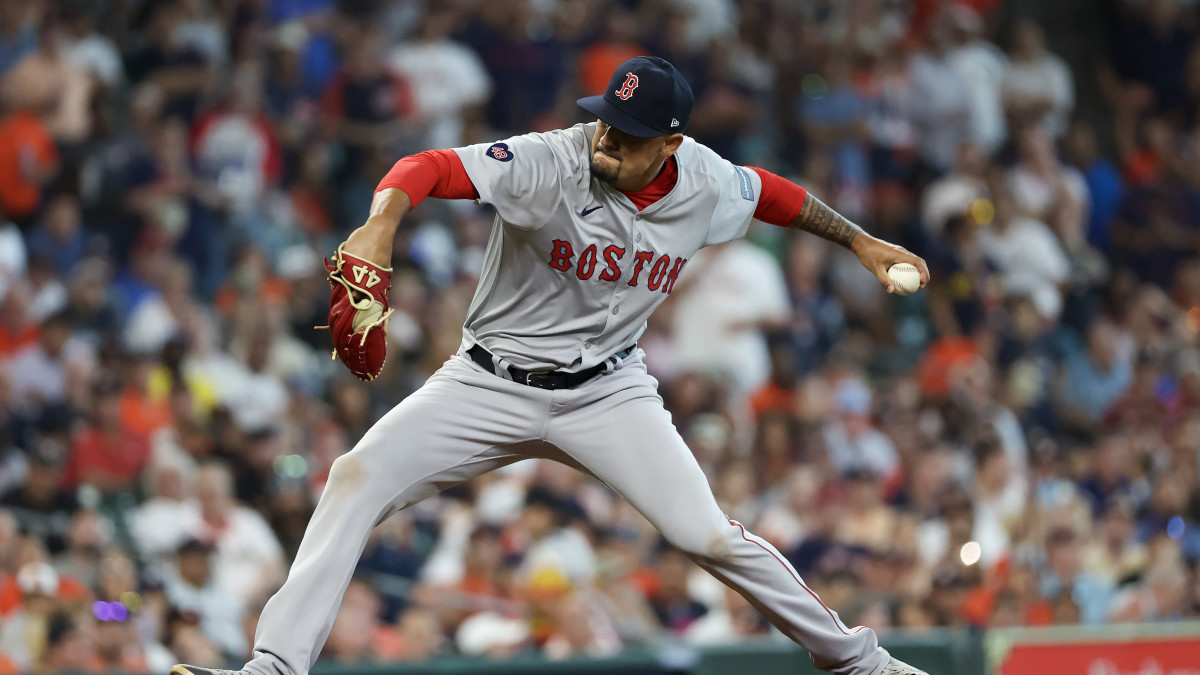
From a fan perspective, these moves are a mix of heartbreak and optimism. Losing Brennan Bernardino, a beloved figure in the bullpen, is tough emotionally, especially given his consistency and role in high-pressure situations. However, the acquisition of promising young talent like Braiden Ward and the promotion of key prospects demonstrates a commitment to building a sustainable and competitive roster. Fans may not see immediate results, but the groundwork for future success is evident.
The Red Sox’s activity on Tuesday also underscores the increasing complexity of modern baseball roster management. Trades, Rule 5 Draft protections, designations for assignment, and roster promotions all intersect, creating a scenario in which front offices must make decisions with both short-term and long-term considerations in mind. It’s a delicate balance, as miscalculations can leave a team vulnerable to losing talent or being overstocked in certain positions while lacking depth in others. Boston’s flurry of moves suggests a front office that is not only proactive but also confident in its evaluations and projections of player development.
Looking ahead, the Red Sox will continue to monitor their roster, both to fill immediate needs and to maximize the value of their newly acquired talent. Drohan’s role, for instance, remains a key point of interest, as his deployment could influence bullpen strategy and starting rotation decisions. Similarly, the development of Ward, Hernandez, and Gray will be closely watched, as their performance in the minors and eventual transition to the Major League roster could determine whether these trades are deemed successful in hindsight.
In conclusion, Tuesday was a whirlwind for the Boston Red Sox, highlighting both the challenges and opportunities of navigating the offseason. By trading Brennan Bernardino, Alex Hoppe, Chris Murphy, and Luis Guerrero, Boston reshaped key parts of its roster while simultaneously positioning itself to protect its future assets. The team added depth at catcher, infield, and outfield positions and secured three important pitching prospects for Rule 5 protection. The moves reflect a calculated strategy of balancing veteran contributions, prospect potential, and roster flexibility. For fans, there was both the sadness of losing a beloved player and the excitement of seeing promising new talent enter the fold. Ultimately, these decisions demonstrate that the Red Sox are not content to stand still; they are actively managing the roster to create a team capable of competing now and in the future.
In totality, the Red Sox’s activity on Tuesday can be seen as a microcosm of modern baseball roster strategy: a careful blend of trading established talent, acquiring promising youth, and navigating the intricacies of roster construction in order to maximize organizational flexibility and future performance. While the full impact of these moves will take time to materialize, the team’s aggressive approach signals that Boston is prepared to shape its roster proactively, balancing immediate needs with long-term potential, and ensuring that it remains competitive both today and in the seasons to come.
